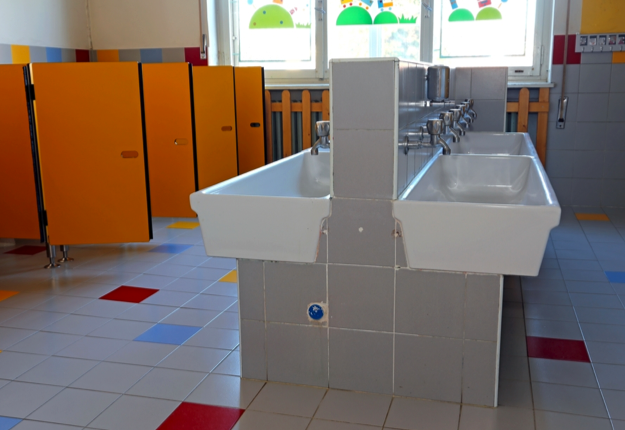When headlines like Primary school punishes children for taking toilet breaks in class time come up in the news media, it’s an opportunity for teachers and school communities to be reminded of the critical role they play in shaping children’s bladder and bowel health, as well as their mental health.
Children can only supress the urge to go to the toilet for so long, and eventually the urine has to come out – whether they are on the toilet or not.
There is ample evidence showing that incontinence in school children can impact their self-esteem and psychological health (1, 2), which in turn gives them a significantly higher chance of being victims or perpetrators of bullying (3).
Faecal incontinence is even more devastating for a child. It often results from constipation (4), which is exacerbated by children not going to the toilet when they get the urge. Constipation affects up to 30 percent of school children at some point 5 and if left untreated, can lead to impaction and subsequent distention (stretching) of the bowel that can cause diarrhoea-like faecal incontinence.
Children put off going to the toilet for lots of reasons; they’re engrossed in play and forget to go during break times, they’re scared of the big kids in the toilets, or the toilets are dirty, smelly or lack privacy. How many times have you watched your own children make a beeline for the toilet as soon as they get home from school?
While the psychological impact of wetting or soiling is often underestimated, the physical impacts can also be long-lasting and serious.
In response to the high incidence of urinary incontinence in primary schools (one in five primary school aged children will wet themselves during the day (6)) and the real risk of lifelong poor toileting habits starting at school (7), the Continence Foundation of Australia launched the Toilet Tactics Kit – a dynamic and interactive educational resource, and part of its recent special project, Healthy Bladder and Bowel Habits in Schools.
Recently the 1000th Australian primary school signed up for the Toilet Tactics Kit, which gives children the know-how to adopt lifelong healthy bowel and bladder habits using familiar, age-appropriate language. They learn about hygiene, how to sit on a toilet correctly, the importance of going when the urge strikes, and how persistent holding on can lead to bladder and bowel dysfunction.
Just as importantly, teachers and parents learn about the importance of encouraging and reinforcing good practices early. It teaches teachers and staff how to recognise the signs a child may be having bladder or bowel issues, and gives them strategies to handle the situations sensitively and effectively.
As more and more schools sign up for Toilet Tactics, fewer children will have to suffer the stresses and consequences of being denied going to the toilet when the urge strikes.
To learn more, or to register your school, go to continence.org.au or phone the National Continence Helpline on 1800 33 00 66.
The Continence Foundation of Australia is the peak national body supporting the 4.8 million Australians affected by incontinence.
References
-
Deshpande, A, Craig, J, Smith, G & Caldwell, P2011, Factors Influencing quality of life in children with urinary Incontinence, The Journal of Urology, vol 186, pp 1048-1052
-
Ollendick. T., King, N. and Frary, R. (1989) Fears in children and adolescents: reliability and generalizability across gender, age and nationality. Behaviour Research and Therapy. Vol. 24.
-
Croghan, E 2002, A survey of drinking and toilet facilities in local state schools, British Journal of Community Nursing, vol. 7, no.2, pp. 76-79
-
Syed Rehan Ali, Shakeel Ahmed, Maqbool Qadir, Khadija N. Humayun, and Khalil Ahmad. Fecal Incontinence and Constipation in Children: A Clinical Conundrum. Oman Med J. Sep 2011; 26(5): 376–378
-
Afzal NA, Tighe MP, Thomson MA.Ital J Pediatr. 2011 Jun 13;37:28. doi: 10.1186/1824-7288-37-28
-
Sureshkumar P, Craig JC, Roy LP, Knight JF. Daytime urinary incontinence in primary school children: a population-based survey. J Pediatr. 2000 Dec;137(6):814-8.
-
Lundblad B, and Hellström A. Perceptions of school toilets as a cause for irregular toilet habits among schoolchildren aged 6 to 16 years. J Sch Health. 2005;75(4):125-128






















8:35 pm
1:52 pm
8:33 pm
10:59 pm
-

-
-
mom88528 replied
- 30 Apr 2015 , 9:38 am
Reply5:01 pm
7:09 pm
10:31 pm
5:23 pm
12:47 pm
-

-
-
mom88528 replied
- 30 Apr 2015 , 9:37 am
Reply11:13 am
10:41 pm
-

-
-
mom88528 replied
- 25 Mar 2015 , 9:27 am
Reply10:11 pm
-

-
-
mom88528 replied
- 25 Mar 2015 , 9:33 am
Reply11:46 pm
-

-
-
mom88528 replied
- 25 Mar 2015 , 9:34 am
Reply10:19 pm
-

-
-
mom88528 replied
- 05 Mar 2015 , 9:19 am
Reply10:03 pm
-

-
-
mom88528 replied
- 05 Mar 2015 , 9:33 am
Reply9:50 pm
9:47 pm
8:44 pm
2:41 pm
-

-
-
mom88528 replied
- 05 Mar 2015 , 10:04 am
Reply12:12 pm
- 1
- 2
- »
Post a commentTo post a review/comment please join us or login so we can allocate your points.